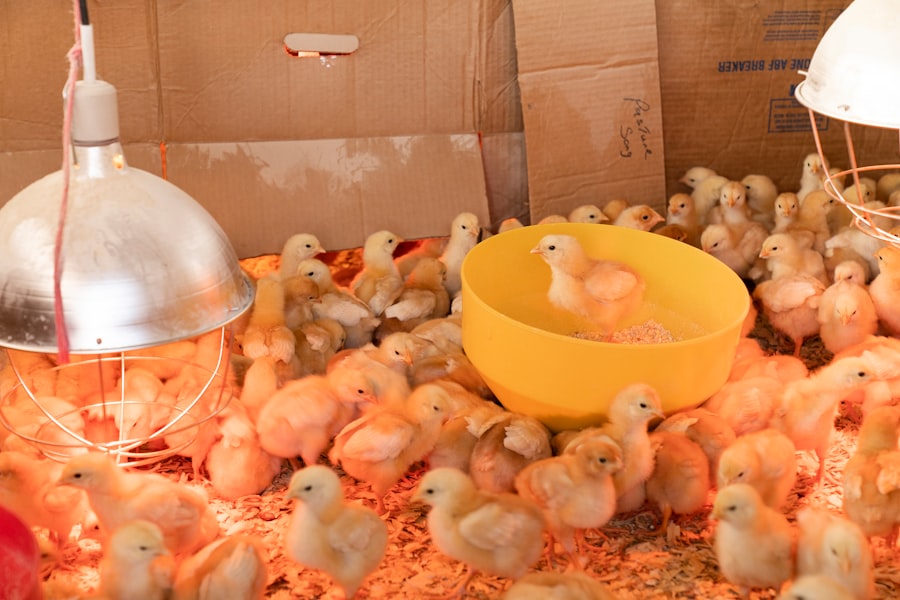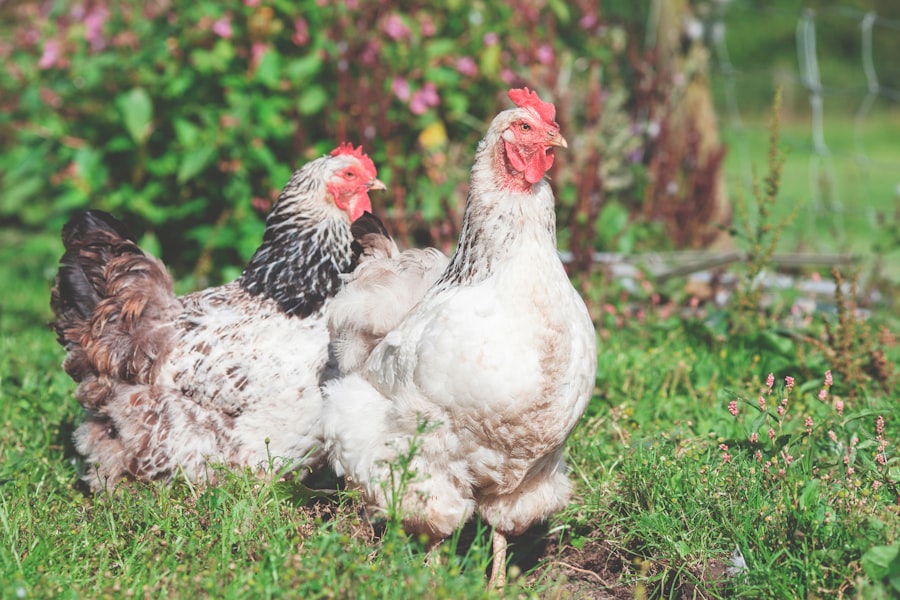Setting up a chicken coop and acquiring necessary equipment is the initial step in chicken keeping. Initial costs vary based on coop size, quality, and required equipment. A basic coop typically costs between $200 and $600, while larger, more elaborate structures can exceed $1000.
Essential items such as feeders, waterers, nesting boxes, and perches may add $100 to $200 to setup costs. Additional expenses include fencing for a safe outdoor area and predator-proofing measures. The total initial investment for a coop and equipment for twelve chickens generally ranges from $500 to $1500.
Various options exist for coop setup and equipment acquisition. Building a coop from scratch can be cost-effective for those with construction skills. Pre-made coop kits are available for less experienced individuals.
Equipment choices range from basic plastic feeders and waterers to more durable metal or galvanized options. Initial costs depend on personal preferences and budget constraints. It is crucial to consider long-term chicken needs when making these investments, as a well-constructed coop and quality equipment contribute to flock health and well-being.
Table of Contents
- 1 Daily Expenses: Feed and Water
- 2 Veterinary Costs: Vaccinations and Check-ups
- 3 Bedding and Cleaning Supplies
- 4 Electricity and Heating Costs
- 5 Unexpected Expenses: Illness or Injury
- 6 Total Cost of Keeping Twelve Chickens Alive for a Year
- 7 FAQs
- 7.1 What are the basic costs of keeping twelve chickens alive?
- 7.2 How much does it cost to purchase twelve chickens?
- 7.3 What are the costs associated with building or purchasing a coop for twelve chickens?
- 7.4 How much does it cost to provide feed and water for twelve chickens?
- 7.5 What are the veterinary care costs for twelve chickens?
- 7.6 What are the miscellaneous expenses of keeping twelve chickens alive?
Key Takeaways
- Initial costs for setting up a coop and equipment can vary, but budgeting for essentials like a coop, feeders, waterers, and fencing is crucial.
- Daily expenses for feed and water should be factored into the budget, with the average chicken consuming about 1/4 to 1/3 pound of feed per day.
- Veterinary costs for vaccinations and check-ups are important for maintaining the health of the chickens and should be included in the annual budget.
- Bedding and cleaning supplies are necessary for maintaining a clean and healthy coop environment, and should be budgeted for accordingly.
- Electricity and heating costs should be considered, especially in colder climates, as chickens may require supplemental heat during the winter months.
Daily Expenses: Feed and Water
Daily Expenses for Your Flock
Once the coop is set up and the chickens are settled in, there are ongoing daily expenses to consider, such as feed and water. The cost of feed for twelve chickens can vary depending on the type and quality of feed purchased. A 50-pound bag of layer feed typically costs around $15 to $25, and twelve chickens can consume approximately one bag of feed per month.
Feed Costs and Options
This means that the monthly cost of feed for twelve chickens can range from $15 to $25. In addition to layer feed, chickens also require occasional treats and supplements, such as scratch grains or oyster shell, which can add a few extra dollars to the monthly feed expenses.
Watering Your Flock
When it comes to water, chickens need access to clean, fresh water at all times. The cost of water for twelve chickens is minimal, as they typically only require a few gallons of water per day. However, it’s important to factor in the cost of any waterers or automatic watering systems that may be needed to ensure that the chickens have a constant supply of water.
Minimizing Costs Without Compromising Care
When it comes to daily expenses for keeping twelve chickens, there are ways to minimize costs without compromising the health and well-being of the flock. One option is to purchase feed in bulk, which can often result in cost savings over time. Another option is to supplement commercial feed with kitchen scraps and garden leftovers, which can help reduce the amount of commercial feed needed. Additionally, investing in high-quality feeders and waterers can help minimize waste and ensure that the chickens have access to clean food and water at all times. By carefully managing daily expenses such as feed and water, it is possible to keep the costs of maintaining a flock of twelve chickens manageable over the long term.
Veterinary Costs: Vaccinations and Check-ups

Veterinary care is an important aspect of keeping chickens healthy and thriving. While chickens are generally hardy animals, they can still be susceptible to various illnesses and health issues that may require veterinary attention. The cost of veterinary care for twelve chickens can vary depending on the services needed.
One of the most important aspects of veterinary care for chickens is vaccinations. Vaccinations are essential for protecting chickens from common diseases such as Marek’s disease and Newcastle disease. The cost of vaccinations for twelve chickens can range from $20 to $50 per year, depending on the type and number of vaccinations needed.
In addition to vaccinations, chickens may also require occasional check-ups or treatment for injuries or illnesses, which can add to the overall veterinary costs. When it comes to veterinary care for chickens, it’s important to establish a relationship with a qualified avian veterinarian who is knowledgeable about poultry health. Regular check-ups and consultations with a veterinarian can help ensure that any health issues are identified and addressed promptly, which can ultimately help reduce long-term veterinary costs.
In addition to vaccinations and check-ups, it’s important for chicken keepers to be prepared for unexpected veterinary expenses that may arise due to illness or injury. Having a budget set aside for veterinary care can help alleviate some of the financial burden associated with keeping chickens healthy and well cared for.
Bedding and Cleaning Supplies
Maintaining a clean and comfortable living environment for twelve chickens requires regular bedding and cleaning supplies. The cost of bedding for twelve chickens can vary depending on the type of bedding used. Common bedding options include straw, wood shavings, or sand, each of which has its own associated costs.
A bale of straw typically costs around $5 to $10, while a bag of wood shavings can cost around $5 to $15, depending on the size and quality of the shavings. Sand is another popular bedding option that can be purchased in bulk for a relatively low cost. In addition to bedding, cleaning supplies such as brooms, rakes, shovels, and disinfectants are necessary for maintaining a clean coop and run area.
The cost of cleaning supplies for twelve chickens can vary depending on the frequency of cleaning and the type of products used. When it comes to bedding and cleaning supplies for keeping twelve chickens, there are ways to minimize costs without sacrificing cleanliness or comfort. For example, using deep litter methods can help reduce the frequency of bedding changes and minimize waste.
Additionally, purchasing cleaning supplies in bulk or using homemade cleaning solutions can help save money over time. It’s important to prioritize cleanliness and hygiene when caring for chickens, as a clean living environment is essential for preventing disease and promoting overall health and well-being.
Electricity and Heating Costs
Electricity and heating costs are additional expenses that should be considered when keeping chickens, especially in colder climates. The cost of electricity for powering lights, heaters, or other electrical equipment in the coop can vary depending on the energy consumption and local utility rates. For example, using a heat lamp or heated waterer during the winter months can result in higher electricity costs compared to using natural lighting and non-heated waterers.
Additionally, some chicken keepers may choose to install automatic door openers or other electrical devices that can contribute to overall electricity expenses. In colder climates, heating costs may also need to be factored in if supplemental heat is required to keep the coop at a comfortable temperature for the chickens. When it comes to managing electricity and heating costs for keeping twelve chickens, there are several strategies that can help minimize expenses.
For example, using energy-efficient lighting and heating equipment can help reduce electricity consumption and lower utility bills. Additionally, implementing insulation and draft-proofing measures in the coop can help retain heat during colder months, reducing the need for supplemental heating. It’s important to carefully consider the energy needs of the chickens while also being mindful of energy conservation practices to keep electricity and heating costs manageable over time.
Unexpected Expenses: Illness or Injury

Health Issues and Veterinary Care
Keeping chickens can be a rewarding experience, but it also comes with unexpected expenses related to illness or injury. Chickens are susceptible to various health issues such as respiratory infections, parasites, or injuries from predators or accidents. The cost of unexpected veterinary care for treating illness or injury in twelve chickens can vary widely depending on the severity of the issue and the treatments needed.
Financial Challenges and Unexpected Expenses
Treating a sick or injured chicken may require medications, surgeries, or other veterinary interventions that can result in significant expenses. Additionally, unexpected expenses may also arise from replacing damaged equipment or making repairs to the coop or run area due to unforeseen events such as severe weather or predator attacks. When it comes to managing unexpected expenses related to illness or injury in twelve chickens, it’s important to be prepared for potential financial challenges.
Mitigating Expenses with Emergency Funds and Insurance
One way to mitigate these expenses is by setting aside an emergency fund specifically designated for unexpected veterinary costs or repairs. Another option is to consider investing in poultry insurance or joining a poultry health plan that can help offset some of the financial burden associated with unexpected veterinary care. By being proactive and prepared for potential health or safety issues that may arise, chicken keepers can better manage unexpected expenses while providing their flock with the care they need.
Total Cost of Keeping Twelve Chickens Alive for a Year
When considering all of the expenses associated with keeping twelve chickens alive for a year, it’s important to take into account both the ongoing daily expenses as well as potential one-time or unexpected costs. The total cost of keeping twelve chickens alive for a year will ultimately depend on various factors such as location, individual preferences, and the specific needs of the flock. On average, however, it’s estimated that the total annual cost of keeping twelve chickens alive can range from $600 to $1500 or more.
In conclusion, keeping twelve chickens alive for a year involves various expenses that should be carefully considered when planning for poultry care. From initial setup costs such as building a coop and purchasing equipment, to ongoing daily expenses such as feed and water, veterinary care, bedding and cleaning supplies, electricity and heating costs, as well as unexpected expenses related to illness or injury – each aspect plays a crucial role in ensuring the health and well-being of the flock. By being mindful of these expenses and implementing cost-saving strategies where possible, chicken keepers can provide their flock with quality care while managing their budget effectively over time.
If you’re interested in learning more about the cost of keeping chickens alive, you may also want to check out this article on chicken coop options in Grand Island, NE. It provides valuable information on the different types of coops available and their associated costs, which can be helpful for anyone looking to raise chickens.
FAQs
What are the basic costs of keeping twelve chickens alive?
The basic costs of keeping twelve chickens alive include purchasing the chickens, building or purchasing a coop, providing feed and water, and covering veterinary care and other miscellaneous expenses.
How much does it cost to purchase twelve chickens?
The cost of purchasing twelve chickens can vary depending on the breed and age of the chickens. On average, the cost can range from $3 to $30 per chicken.
What are the costs associated with building or purchasing a coop for twelve chickens?
The cost of building or purchasing a coop for twelve chickens can range from $200 to $1000, depending on the size, materials, and features of the coop.
How much does it cost to provide feed and water for twelve chickens?
The cost of providing feed and water for twelve chickens can vary depending on the type of feed and the region. On average, it can cost around $15 to $30 per month to feed twelve chickens.
What are the veterinary care costs for twelve chickens?
The veterinary care costs for twelve chickens can vary depending on the health of the chickens and the region. On average, it can cost around $50 to $100 per year for basic veterinary care for twelve chickens.
What are the miscellaneous expenses of keeping twelve chickens alive?
The miscellaneous expenses of keeping twelve chickens alive can include bedding, supplements, and other supplies. On average, these expenses can range from $50 to $100 per year.
Meet Walter, the feathered-friend fanatic of Florida! Nestled in the sunshine state, Walter struts through life with his feathered companions, clucking his way to happiness. With a coop that’s fancier than a five-star hotel, he’s the Don Juan of the chicken world. When he’s not teaching his hens to do the cha-cha, you’ll find him in a heated debate with his prized rooster, Sir Clucks-a-Lot. Walter’s poultry passion is no yolk; he’s the sunny-side-up guy you never knew you needed in your flock of friends!







